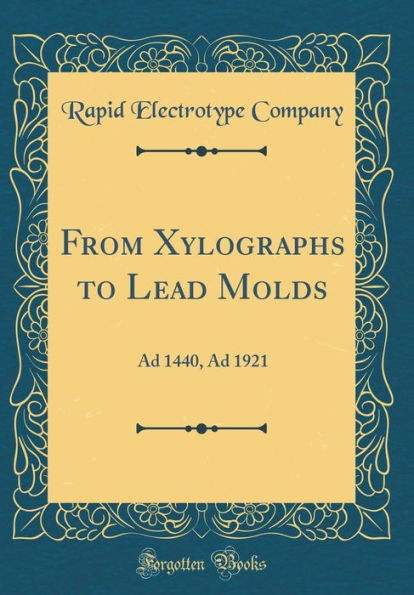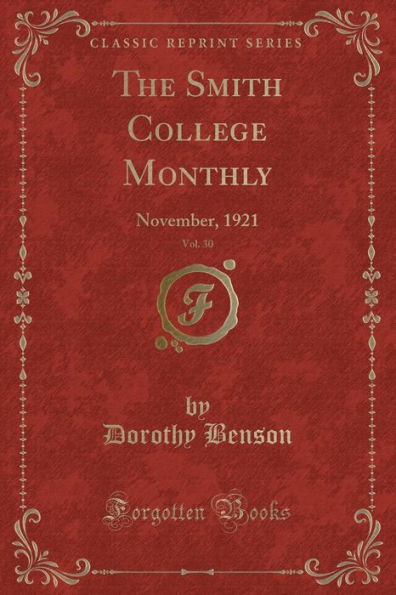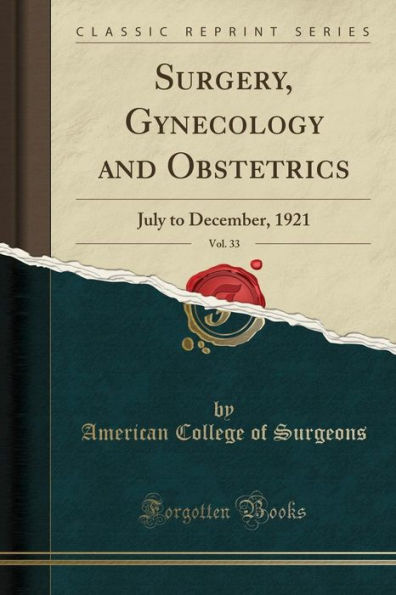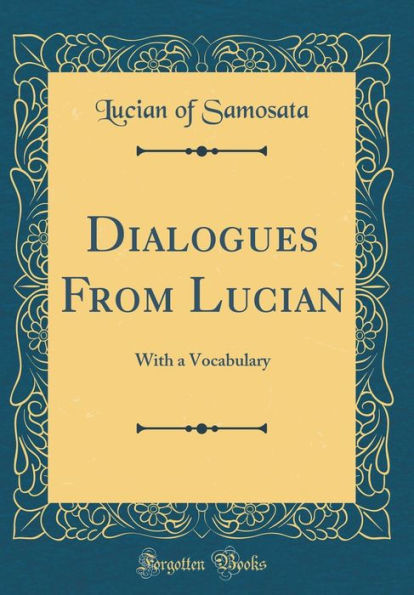Home
From Xylographs to Lead Molds: Ad 1440, Ad 1921 (Classic Reprint)
Barnes and Noble
Loading Inventory...
From Xylographs to Lead Molds: Ad 1440, Ad 1921 (Classic Reprint) in Franklin, TN
Current price: $25.30

Barnes and Noble
From Xylographs to Lead Molds: Ad 1440, Ad 1921 (Classic Reprint) in Franklin, TN
Current price: $25.30
Loading Inventory...
Size: OS
Excerpt from From Xylographs to Lead Molds: Ad 1440, Ad 1921
Centuries before 1440 printing is believed to have been attempted in China; presumably about the begin ning of the Christian era. It is said that in the year A. D. 175 the text of the Chinese classics was cut into tablets which were erected outside the national university at Peking, and that impressions - probably rubbings were taken of them. Some of these fac-simile impressions are still in existence, it is asserted.
Xylography was also practiced in China long before Europe knew the art. It can be traced as far back as the sixth century, when the founder of the Suy dynasty is said to have had the remains of the Chinese classics engraved on wood, though it was not until the tenth century that printed books became common in China.
The authorities of the British Museum also report that Chinese writers give the name of a certain Pi Sheng who, in the eleventh century, invented movable type, and the Department of Oriental Printed Books and Manuscripts of the same institution possesses a copy of the Wen hsien tung Kao, a Chinese encyclopedia printed in Korea from movable type in A. D. 1337.
About the Publisher
Forgotten Books publishes hundreds of thousands of rare and classic books. Find more at www.forgottenbooks.com
This book is a reproduction of an important historical work. Forgotten Books uses state-of-the-art technology to digitally reconstruct the work, preserving the original format whilst repairing imperfections present in the aged copy. In rare cases, an imperfection in the original, such as a blemish or missing page, may be replicated in our edition. We do, however, repair the vast majority of imperfections successfully; any imperfections that remain are intentionally left to preserve the state of such historical works.
Centuries before 1440 printing is believed to have been attempted in China; presumably about the begin ning of the Christian era. It is said that in the year A. D. 175 the text of the Chinese classics was cut into tablets which were erected outside the national university at Peking, and that impressions - probably rubbings were taken of them. Some of these fac-simile impressions are still in existence, it is asserted.
Xylography was also practiced in China long before Europe knew the art. It can be traced as far back as the sixth century, when the founder of the Suy dynasty is said to have had the remains of the Chinese classics engraved on wood, though it was not until the tenth century that printed books became common in China.
The authorities of the British Museum also report that Chinese writers give the name of a certain Pi Sheng who, in the eleventh century, invented movable type, and the Department of Oriental Printed Books and Manuscripts of the same institution possesses a copy of the Wen hsien tung Kao, a Chinese encyclopedia printed in Korea from movable type in A. D. 1337.
About the Publisher
Forgotten Books publishes hundreds of thousands of rare and classic books. Find more at www.forgottenbooks.com
This book is a reproduction of an important historical work. Forgotten Books uses state-of-the-art technology to digitally reconstruct the work, preserving the original format whilst repairing imperfections present in the aged copy. In rare cases, an imperfection in the original, such as a blemish or missing page, may be replicated in our edition. We do, however, repair the vast majority of imperfections successfully; any imperfections that remain are intentionally left to preserve the state of such historical works.
Excerpt from From Xylographs to Lead Molds: Ad 1440, Ad 1921
Centuries before 1440 printing is believed to have been attempted in China; presumably about the begin ning of the Christian era. It is said that in the year A. D. 175 the text of the Chinese classics was cut into tablets which were erected outside the national university at Peking, and that impressions - probably rubbings were taken of them. Some of these fac-simile impressions are still in existence, it is asserted.
Xylography was also practiced in China long before Europe knew the art. It can be traced as far back as the sixth century, when the founder of the Suy dynasty is said to have had the remains of the Chinese classics engraved on wood, though it was not until the tenth century that printed books became common in China.
The authorities of the British Museum also report that Chinese writers give the name of a certain Pi Sheng who, in the eleventh century, invented movable type, and the Department of Oriental Printed Books and Manuscripts of the same institution possesses a copy of the Wen hsien tung Kao, a Chinese encyclopedia printed in Korea from movable type in A. D. 1337.
About the Publisher
Forgotten Books publishes hundreds of thousands of rare and classic books. Find more at www.forgottenbooks.com
This book is a reproduction of an important historical work. Forgotten Books uses state-of-the-art technology to digitally reconstruct the work, preserving the original format whilst repairing imperfections present in the aged copy. In rare cases, an imperfection in the original, such as a blemish or missing page, may be replicated in our edition. We do, however, repair the vast majority of imperfections successfully; any imperfections that remain are intentionally left to preserve the state of such historical works.
Centuries before 1440 printing is believed to have been attempted in China; presumably about the begin ning of the Christian era. It is said that in the year A. D. 175 the text of the Chinese classics was cut into tablets which were erected outside the national university at Peking, and that impressions - probably rubbings were taken of them. Some of these fac-simile impressions are still in existence, it is asserted.
Xylography was also practiced in China long before Europe knew the art. It can be traced as far back as the sixth century, when the founder of the Suy dynasty is said to have had the remains of the Chinese classics engraved on wood, though it was not until the tenth century that printed books became common in China.
The authorities of the British Museum also report that Chinese writers give the name of a certain Pi Sheng who, in the eleventh century, invented movable type, and the Department of Oriental Printed Books and Manuscripts of the same institution possesses a copy of the Wen hsien tung Kao, a Chinese encyclopedia printed in Korea from movable type in A. D. 1337.
About the Publisher
Forgotten Books publishes hundreds of thousands of rare and classic books. Find more at www.forgottenbooks.com
This book is a reproduction of an important historical work. Forgotten Books uses state-of-the-art technology to digitally reconstruct the work, preserving the original format whilst repairing imperfections present in the aged copy. In rare cases, an imperfection in the original, such as a blemish or missing page, may be replicated in our edition. We do, however, repair the vast majority of imperfections successfully; any imperfections that remain are intentionally left to preserve the state of such historical works.

















